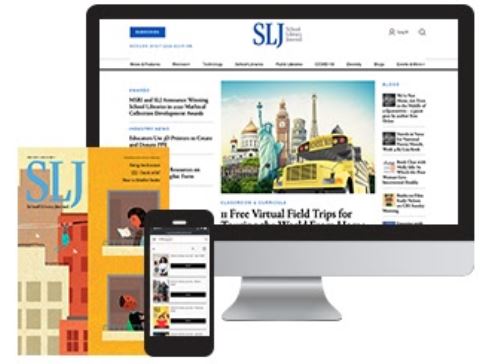Sandhya Menon on Romance and Diaspora in Her “When Dimple Met Rishi”
Sandhya Menon talks about her inspiration, writing process, and her YA debut When Dimple Met Rishi about two first-generation Indian American teens who (just might) be meant for each other.
 Dimple is ready to cast off her family’s cultural traditions in pursuit of her burgeoning tech career at Stanford, especially her mom’s insistence that she wear makeup and dresses. The teen is surprised that her parents let her attend a summer coding camp in San Francisco, not realizing that they have set up a possible arranged marriage with a friend’s son. Rishi is also attending the coding camp and is hoping to get to know his future bride. When the two meet, a comedy of errors ensues. In Sandhya Menon’s charming When Dimple Met Rishi (Simon Pulse; May 30, 2017), the author explores family ties, first love, and the clash between duty and dreams through the eyes of two first-generation Indian American teens who (just might) be meant for each other. How long did it take to write this book, from conception to final copy edits? And what has been the most difficult part of being a debut author? Around seven to nine months. I write fairly quickly once I get started, especially with a book that really speaks to me. And the Simon Pulse team was amazing at getting things turned around swiftly in the editing phase. The most difficult part has been time management, without a question! I'm a mother of two elementary school–aged children and a wife as well, so those parts of my life just can't be relegated to the side. And when I was writing/editing, I was also in graduate school (I've since decided to take a break!), which meant I had to be really careful about how I was delegating my free time. What's your favorite part so far? By far, the reader response to the book. I've absolutely loved hearing from teens who've been able to see themselves or their families in a book for the first time. It's so touching and incredibly humbling to hear, "The girl on the cover looks like me and that means so much!" or "I'd never heard of this type of food in a book before; my family eats this!" or even "I never thought I'd get to read about a heroine/hero like me." Words have power, and readers have reminded me of that over and over again throughout this journey. What inspired you to write When Dimple Met Rishi? I've always been drawn to the light romance genre. I'm a huge fan of writers like Sophie Kinsella and Jenny Han, and it was during a discussion with my editor that the idea for When Dimple Met Rishi started to take shape. Not only did I want to write a light, humorous romance like the ones I love to read, but the main characters would be Indian American teens with immigrant parents, something that spoke to everything inside me, and from there the story just poured out—unstoppable. Can you tell us a little bit about your writing process? Did the characters come to you fully formed? I usually see characters first (usually the heroine) and one plot point. With Dimple and Rishi, I knew they had to be polar opposites to really bring the humor to the forefront, and also to show two very different sides of the same coin—teens growing up in the diaspora, with one of them wanting to relinquish her family's ideals, and the other fully entrenched in them. I knew that Dimple would struggle mightily, too, with gender roles, both within Indian culture and her chosen profession. And I knew Rishi would actually have this secret part of him that he never let show, an artistic side he was trying to smother for (what he'd say was) the greater good.
Dimple is ready to cast off her family’s cultural traditions in pursuit of her burgeoning tech career at Stanford, especially her mom’s insistence that she wear makeup and dresses. The teen is surprised that her parents let her attend a summer coding camp in San Francisco, not realizing that they have set up a possible arranged marriage with a friend’s son. Rishi is also attending the coding camp and is hoping to get to know his future bride. When the two meet, a comedy of errors ensues. In Sandhya Menon’s charming When Dimple Met Rishi (Simon Pulse; May 30, 2017), the author explores family ties, first love, and the clash between duty and dreams through the eyes of two first-generation Indian American teens who (just might) be meant for each other. How long did it take to write this book, from conception to final copy edits? And what has been the most difficult part of being a debut author? Around seven to nine months. I write fairly quickly once I get started, especially with a book that really speaks to me. And the Simon Pulse team was amazing at getting things turned around swiftly in the editing phase. The most difficult part has been time management, without a question! I'm a mother of two elementary school–aged children and a wife as well, so those parts of my life just can't be relegated to the side. And when I was writing/editing, I was also in graduate school (I've since decided to take a break!), which meant I had to be really careful about how I was delegating my free time. What's your favorite part so far? By far, the reader response to the book. I've absolutely loved hearing from teens who've been able to see themselves or their families in a book for the first time. It's so touching and incredibly humbling to hear, "The girl on the cover looks like me and that means so much!" or "I'd never heard of this type of food in a book before; my family eats this!" or even "I never thought I'd get to read about a heroine/hero like me." Words have power, and readers have reminded me of that over and over again throughout this journey. What inspired you to write When Dimple Met Rishi? I've always been drawn to the light romance genre. I'm a huge fan of writers like Sophie Kinsella and Jenny Han, and it was during a discussion with my editor that the idea for When Dimple Met Rishi started to take shape. Not only did I want to write a light, humorous romance like the ones I love to read, but the main characters would be Indian American teens with immigrant parents, something that spoke to everything inside me, and from there the story just poured out—unstoppable. Can you tell us a little bit about your writing process? Did the characters come to you fully formed? I usually see characters first (usually the heroine) and one plot point. With Dimple and Rishi, I knew they had to be polar opposites to really bring the humor to the forefront, and also to show two very different sides of the same coin—teens growing up in the diaspora, with one of them wanting to relinquish her family's ideals, and the other fully entrenched in them. I knew that Dimple would struggle mightily, too, with gender roles, both within Indian culture and her chosen profession. And I knew Rishi would actually have this secret part of him that he never let show, an artistic side he was trying to smother for (what he'd say was) the greater good.  Which character do you identify with the most? Was it the most difficult to write? This is such a hard question! I think I'm equal parts Dimple and Rishi, so I identify with each of their struggles. Like Dimple, I consider myself a feminist and am pretty ambitious. But like Rishi, I see the value of Indian culture, am fairly easygoing, and have felt that struggle between what your parents want you to do and your art. Neither character was difficult to write because I felt their pain and joy so deeply and personally. I wanted, first and foremost, for them to be authentic so teens could relate to them, and so drawing from my own personal well felt more like a privilege than a challenge. I love how you explore so many tensions in this book: tradition vs. modernism, responsibility vs. dreams, the arts vs. tech, gender roles, and socioeconomic class. Why did you think it was important to include? These are very common [issues] that so many teens struggle with; I know I certainly did growing up. I wanted these characters to feel three-dimensional enough so [that] they felt like friends having a conversation that you happened to overhear. It was important to me to include all of those challenges that make us open up to people and relate to them. In this comedy of errors–type book, Rishi is often the traditional romantic and Dimple is the more forward-thinking protagonist. I found the switch in traditional romance tropes refreshing. Was this your original intent? Yes, definitely. I wanted to show that girls can be the ambitious and career-minded ones, and that it's okay for guys to be romantic and want the more traditional things in life. It's important to me that teen readers be exposed to a variety of beliefs. I was pleasantly surprised to see a Dominican secondary character in this (I'm Dominican!), because that doesn't happen often. How important do you think it is for readers (white and non-white) to read a book with a primarily diverse cast of characters? That's such a cool coincidence! It's so important to me that all readers see that whiteness doesn't have to be the default. There are people of color living their lives happily and successfully as well, and they are absolutely the heroes of their own stories. They have friends who are also people of color, and there's this whole other side of the story that we don't usually get to see in media or books. Despite some of the heavy issues explored (faith, privilege, sexism, racism), this is also a light and touching romance. Were the steamy scenes difficult to write? I had moments of terror when I was unsure of whether to include those scenes in the book or not. South Asian communities in general (though individual experiences vary, of course) are rather private about sex—especially when it comes to teenagers! But in the end, it was important to me to include a realistic depiction of what a relationship between two 18-year-olds looks like in the majority of cases. It was a chance, too, to include sex-positive scenes in YA, which I think are so, so important. What are you working on next? My next contemporary YA, which will be out in the summer of 2018. It's an epistolary novel that follows an Indian American teen who's an aspiring filmmaker. She writes letters in her diary to famous female filmmakers she considers her idols as a way to navigate friendship and romance. It's been so much fun to write, and I can't wait to share with the world.
Which character do you identify with the most? Was it the most difficult to write? This is such a hard question! I think I'm equal parts Dimple and Rishi, so I identify with each of their struggles. Like Dimple, I consider myself a feminist and am pretty ambitious. But like Rishi, I see the value of Indian culture, am fairly easygoing, and have felt that struggle between what your parents want you to do and your art. Neither character was difficult to write because I felt their pain and joy so deeply and personally. I wanted, first and foremost, for them to be authentic so teens could relate to them, and so drawing from my own personal well felt more like a privilege than a challenge. I love how you explore so many tensions in this book: tradition vs. modernism, responsibility vs. dreams, the arts vs. tech, gender roles, and socioeconomic class. Why did you think it was important to include? These are very common [issues] that so many teens struggle with; I know I certainly did growing up. I wanted these characters to feel three-dimensional enough so [that] they felt like friends having a conversation that you happened to overhear. It was important to me to include all of those challenges that make us open up to people and relate to them. In this comedy of errors–type book, Rishi is often the traditional romantic and Dimple is the more forward-thinking protagonist. I found the switch in traditional romance tropes refreshing. Was this your original intent? Yes, definitely. I wanted to show that girls can be the ambitious and career-minded ones, and that it's okay for guys to be romantic and want the more traditional things in life. It's important to me that teen readers be exposed to a variety of beliefs. I was pleasantly surprised to see a Dominican secondary character in this (I'm Dominican!), because that doesn't happen often. How important do you think it is for readers (white and non-white) to read a book with a primarily diverse cast of characters? That's such a cool coincidence! It's so important to me that all readers see that whiteness doesn't have to be the default. There are people of color living their lives happily and successfully as well, and they are absolutely the heroes of their own stories. They have friends who are also people of color, and there's this whole other side of the story that we don't usually get to see in media or books. Despite some of the heavy issues explored (faith, privilege, sexism, racism), this is also a light and touching romance. Were the steamy scenes difficult to write? I had moments of terror when I was unsure of whether to include those scenes in the book or not. South Asian communities in general (though individual experiences vary, of course) are rather private about sex—especially when it comes to teenagers! But in the end, it was important to me to include a realistic depiction of what a relationship between two 18-year-olds looks like in the majority of cases. It was a chance, too, to include sex-positive scenes in YA, which I think are so, so important. What are you working on next? My next contemporary YA, which will be out in the summer of 2018. It's an epistolary novel that follows an Indian American teen who's an aspiring filmmaker. She writes letters in her diary to famous female filmmakers she considers her idols as a way to navigate friendship and romance. It's been so much fun to write, and I can't wait to share with the world. undefined says
Do we, as a culture, have anything worthwhile to pass down to our children, in the way of values? It seems we’ve embraced relativism as our new religion. It’s ludicrous to offer middle and high schoolers these titillating books when what they really need is a cold shower!
Add Comment :-
RELATED
RECOMMENDED
CAREERS
The job outlook in 2030: Librarians will be in demand
CAREERS
The job outlook in 2030: Librarians will be in demand
ALREADY A SUBSCRIBER? LOG IN
We are currently offering this content for free. Sign up now to activate your personal profile, where you can save articles for future viewing






